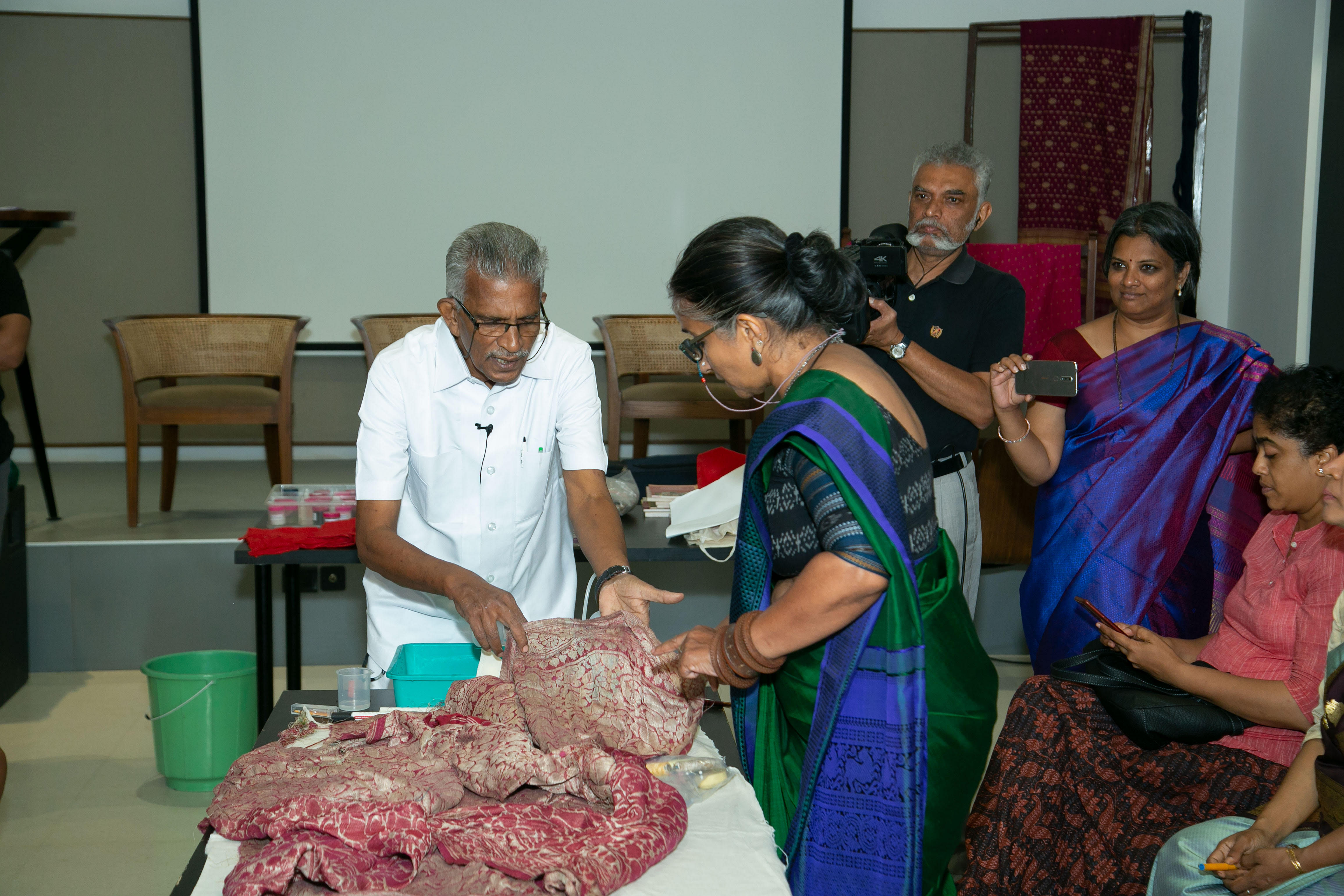
The conservation of handlooms was one of the topics stressed on at ‘A handloom voyage’, a five-day event held by the Vimor Handloom Foundation at the Bangalore International Centre.
On the third day, sessions such as ‘Museum Magic’ and ‘A Textile Conservation Workshop’ were held.
In ‘Museum Magic’, Manasi Prasad from the Indian Music Experience and Pavithra Muddaya from the Vimor Handloom Foundation, along with weaver and freedom fighter Sangappa Mante, discussed the close relationship between weaving and poetry.
Manasi, in conversation with Pavithra, spoke about the need to create public spaces and forums for dialogues on arts, crafts, and culture. Both their spaces, ‘The Indian Music Experience’ and Vimor’s ‘Museum of Living Textiles’, aim to be platforms for dialogues and exchange of ideas.
Sangappa addressed the little known link between weaving, poetry and philosophy through the life of Saint Devar Dasimayya.Dasimayya, a mid-11th-century poet and ‘vachanakaara’ went on to inspire through his words other poets and authors such as Basavanna.
Sangappa says that Dasimayya, who was a weaver by profession, is his “kuladeva”.
He says, “Goddess Saraswathi blesses us all with knowledge, but Dasimayya taught us everything about weaving — about threads, weaves, and patterns.”
The session ‘A Textile Conservation Workshop’ was done by heritage conservationist Dr V Jeyraj from Chennai. The workshop gave interactive insights into how one could preserve their handloom saris.
The audience was impressed by the tips shared.
Jeyraj spoke about the nuances of the sari, its warp and weft, types of fibers and threads, effect of moisture on various fabrics, techniques to remove stains, different cleaning methods, among others.
He also spoke about damaging agents to textiles and more.
Interesting pointers from his session
- When trying to clean tarnished zari work, use ammonia (after a test).
- Straighten out creases in a folded sari by stretching out the fabric and pouring distilled water over the crease. After drying, the crease disappears.
- A lot of light can affect the dyes in saris, so never dry a sari in direct sunlight.
Curated walk
The entire layout of Bangalore International Centre is divided into four themed sections — Revival, Vimor’s museum, Renewal, and Innovation and Livelihood. Each day, a curated walk is held, which takes the audience through handloom pieces that are priceless, and are trademarks of heritage and culture.
Vipra, trustee at Vimor Handloom Foundation says, “Our walk was focused on Vimor’s Museum of Living Textiles, which is a haven of handloom research, conservation and preservation. Some of the most iconic pieces such as Broad Border Chettinad and the Pooja saree, that are on display in the museum, have been crucial in design preservation and restoration.”
She added, “A lot of the information and research was gathered by word-of-mouth and there is a lot that saris can tell us. Some pieces have been difficult to decode due to the absence of documentation. We encourage people to come forward if they have any information regarding textiles.”
Watch out for...
The event is on till Tuesday. Sessions to watch out for include:
Monday
Curated walk: Renewal (12.30 pm - 2 pm)
The Working Women: The Sarees Recast (2 to 3.30 pm)
Saree without Border: Stories of Design (4 to 5.30 pm)
Tuesday
Curated walk: Innovation & Livelihood (12.30 pm - 2 pm)
On The Horizon for Textile Design (4 to 5.30 pm)
For details call: 98867 39291 or 96200 71147, or email to info@vimorfoundation.org